Finding a snack that’s both delicious and nutritious can be a challenge. Fortunately, there are plenty of low carb crackers to buy that are tasty and satisfying and can help you stay on track with your health and dietary goals. From almond flour crackers to cheese crisps, there are plenty of low carb options to choose from. In this article, we’ll explore some of the best options on the market and what to look for when selecting a healthy and delicious snack.
A Quick Summary of the Best Low Carb Crackers
- Best for weight loss: Julian Bakery Primal Thin Crackers
- Best source of fiber: Fiber Gourmet Thinables
- Best flax seed crackers: Flackers Organic Flax-Seed Crackers
- Best for dipping: Fat Snax Almond Flour Crackers
- Best cauliflower crackers: Cali’flour Crackers
- Best cheese crackers: ParmCrisps
- Best keto crackers overall: High Key Almond Flour Crackers
- Best vegan keto crackers: Hu Paleo Vegan Crackers
- Best crackers for a restrictive diet: SimpleMills Almond Flour Crackers
- Most versatile keto crackers: Whisps Cheese Crisps
How We Selected These Low Carb Crackers
To make our list of low-carb crackers, we considered three main factors which are:
Macros
When selecting the keto crackers on this list, one of the most important factors we considered was the macros, particularly net carbs. We aimed to recommend crackers that were low in net carbs and in most cases, high in fiber and protein, as these are important for maintaining a healthy diet. You can rest assured that any of the crackers on this list can be enjoyed regularly without worrying about compromising your carb intake.
Ingredient Quality
Another key factor we considered when selecting keto crackers was ingredient quality. The best low-carb crackers are made with natural ingredients, free from potentially harmful additives like artificial flavors, colors, and preservatives. Not only are the ingredients in the crackers on this list very safe but are also very healthy as most of them are rich in nutrients like protein, healthy fats, vitamins, and minerals.
Taste
Finally, we considered taste when selecting keto crackers. We read reviews from customers on company websites and third-party retailers like Amazon to ensure that we were recommending crackers that were both nutritious and delicious. We aimed to select crackers that were versatile and could be enjoyed on their own, with dips, or as part of a nutritious trail mix.
Best Low Carb Crackers
Below is a table summarizing what we like and what could be improved upon in our top ten low-carb cracker picks:
| Brand | Pros | Cons |
| Julian Bakery Primal Thin Crackers |
|
|
| Fiber Gourmet Thinables |
|
|
| Flackers Organic Flax-Seed Crackers |
|
|
| Fat Snax Almond Flour Crackers |
|
|
| Cali’flour Crackers |
|
|
| ParmCrisps |
|
|
| High Key Almond Flour Crackers |
|
|
| Hu Paleo Vegan Crackers |
|
|
| SimpleMills Almond Flour Crackers |
|
|
| Whisps Crisps |
|
|
1. Julian Bakery Primal Thin Crackers
If you’re craving a crunchy salty treat that will not spike your blood sugar levels, the Julian Bakery Primal Thin Crackers are the perfect choice. The delicious crackers contain only natural ingredients which include blanched almond flour, cassava flour, organic sesame seeds, organic chia seeds, and organic flax seeds.
One serving (approximately six crackers) contains:
- 70 Calories
- 4.5 grams of Fat
- 5 grams of Net carbs
- 2 grams of Dietary Fiber
- 2 grams of Protein
The crackers come in two flavors: salt and pepper and organic parmesan which uses parmesan cheese as the main ingredient instead of almond flour. For this reason, the parmesan flavor is also lower in net carbs with only 3 grams per serving.
Price: $24.99 at Julian Bakery, $24.78 at Walmart
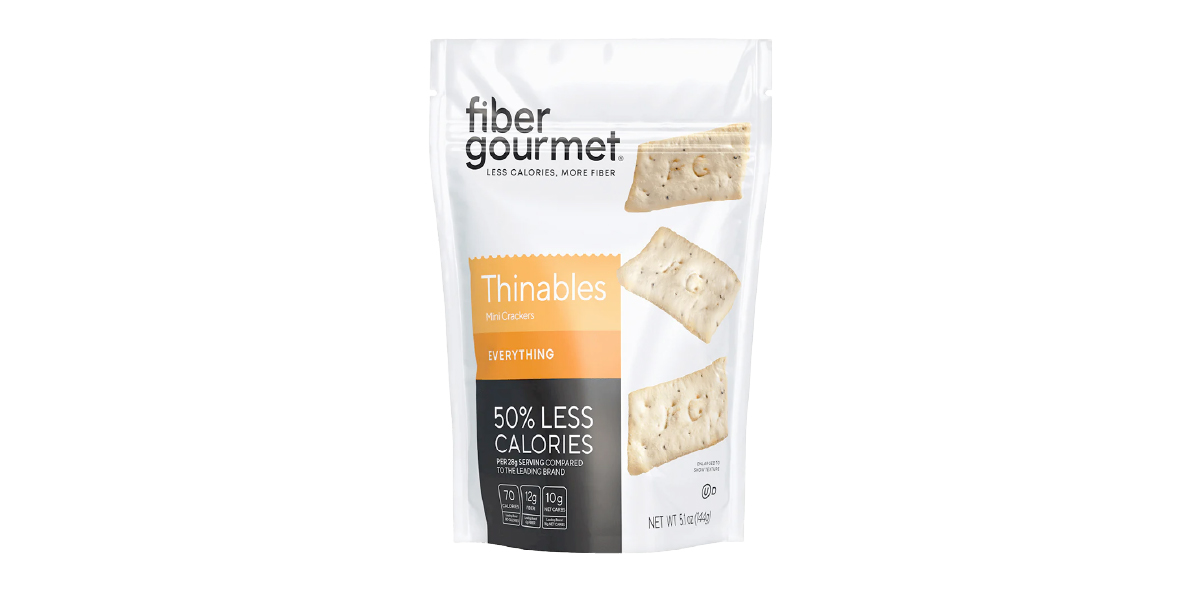
2. Fiber Gourmet Thinables
These popular crackers might not be ideal for you if you are on a strict keto plan but if you’re flexible with your diet, you’re in for a treat (literally). This is because the crackers contain wheat flour which some might not consider strictly keto. Despite having wheat, these crackers still have fairly keto-friendly macros:
- 70 Calories
- 2 grams of Fat
- 10 grams of Net carbs
- 12 grams of Dietary Fiber
- 4 grams of Protein
In addition to having a modest net carb count, Thinables are also a wonderful source of fiber offering up to a third of your daily needs per serving.
Price: $5.79 at Fiber Gourmet, $9.99 at Walmart
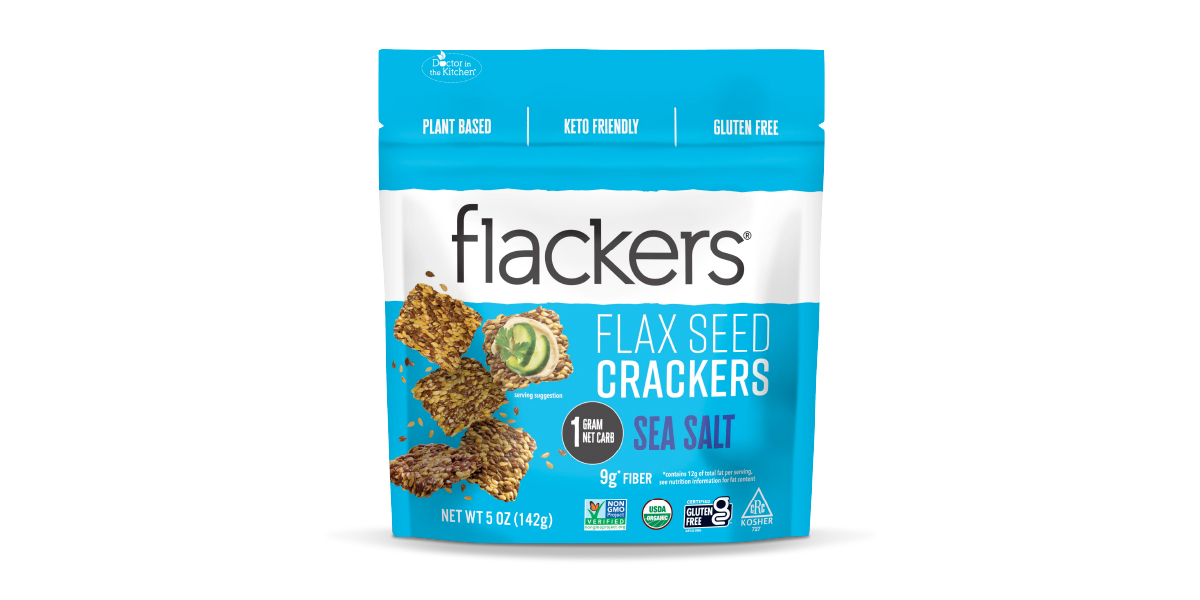
3. Flackers Organic Flax-Seed Crackers
Flackers Organic Flax-Seed Crackers are a great snack option for those seeking a more versatile option. Made with only three natural ingredients, these crackers are gluten-free, paleo, vegan, kosher, low carb, and keto-friendly. Each serving of Flackers contains:
- 90 calories
- 12 grams of fat
- 1 gram of net carbs
- 6 grams of protein
- 11 grams of dietary fiber
They are available in five tasty flavors, including sea salt, tomato & basil, cinnamon & currants, and savory. Whether you enjoy them on their own or paired with your favorite spreads and dips, Flackers are a nutritious and satisfying snack that won’t disappoint.
Price: $5.99 at Flackers, $5.29 on Amazon
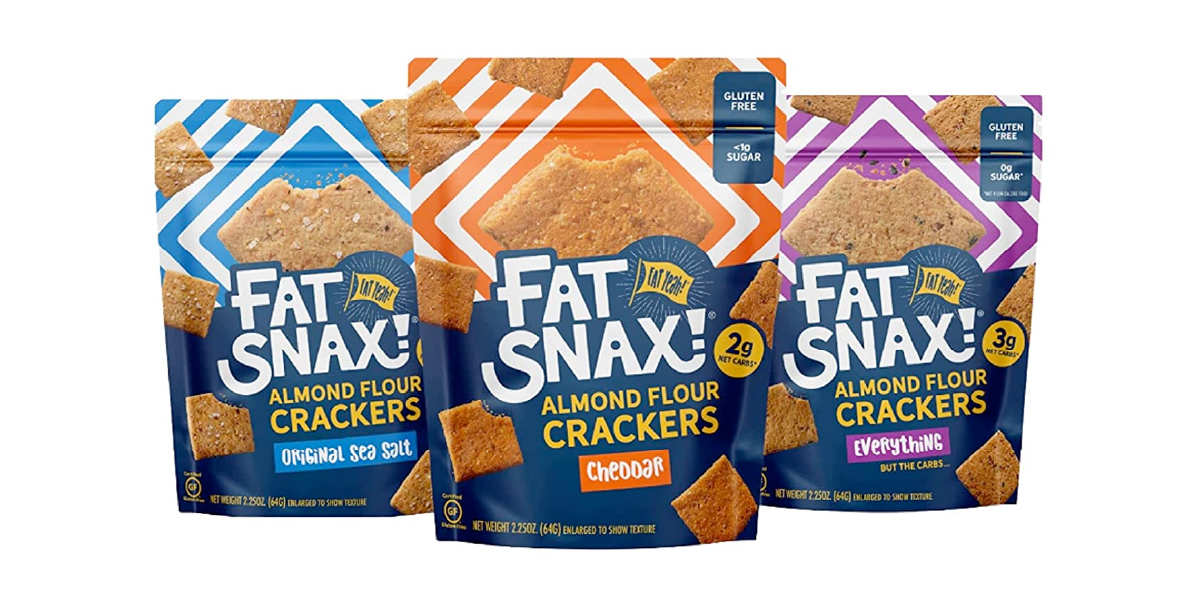
4. Fat Snax Almond Flour Crackers
Fat Snax Almond Flour Crackers are a delicious and guilt-free snack option for anyone looking for a low-carb, high-fat treat. Made with a blend of almond flour, coconut flour, flax meal, egg white, and a mix of dairy products including butter and cream cheese, these crackers have a rich savory flavor.
Each serving of Fat Snax Crackers contains:
- 130 Calories
- 11 grams of fats
- 2 grams of net carbs
- 3 grams of fiber
- 5 grams of protein
The addition of gums, such as guar gum and carob bean gum, help to give these crackers their perfect texture, ensuring that they hold up well when dipped into your favorite spreads. One satisfied customer raves about the cheddar flavor, which is both delicious and sturdy enough to hold up against dips.
Price: $26.99 at Fat Snax, $44.99 on Amazon
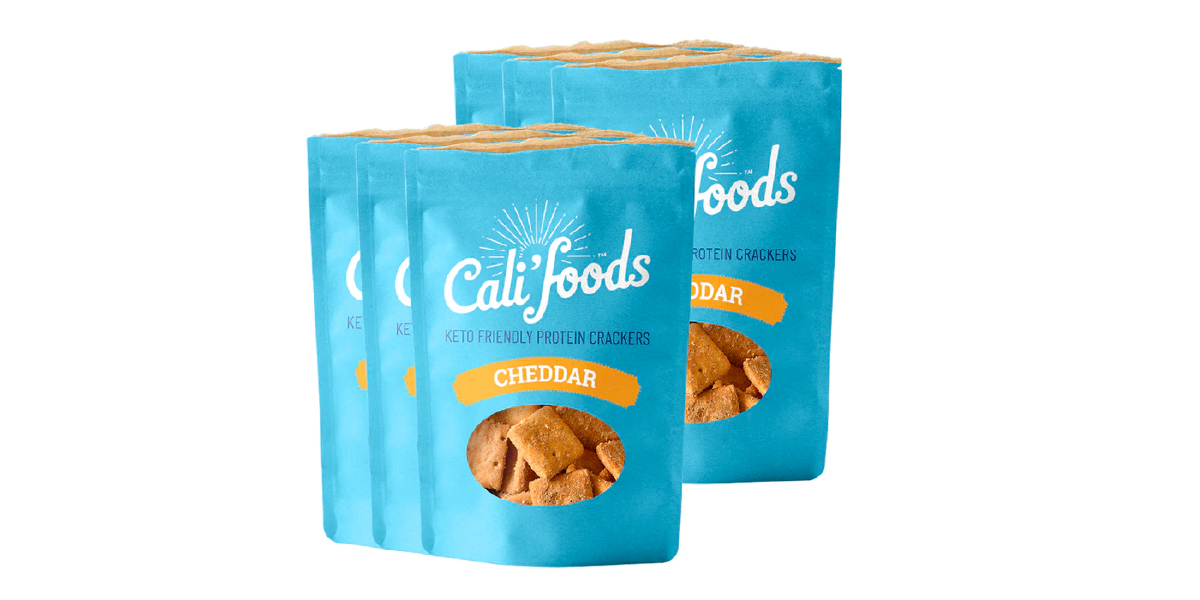
5. Cali’flour Crackers
Cali’flour Crackers are the perfect snack option for those who are not a fan of flax seeds. These keto-friendly crackers are made with a blend of cheddar cheese, almond flour, tapioca fiber, and olive oil, resulting in a delicious and crunchy cracker that offers some protein and fiber. Each serving contains:
- 170 Calories
- 13 grams of Fat
- 3 grams of Net carbs
- 4 grams of Dietary Fiber
- 8 grams of Protein
While they do contain more ingredients than some other keto-friendly crackers, all of the ingredients are natural and free from artificial colors, dyes, and flavors. Plus, they are produced in California and shipped quickly for maximum freshness.
Price: $47.99 at Cali’flour Foods
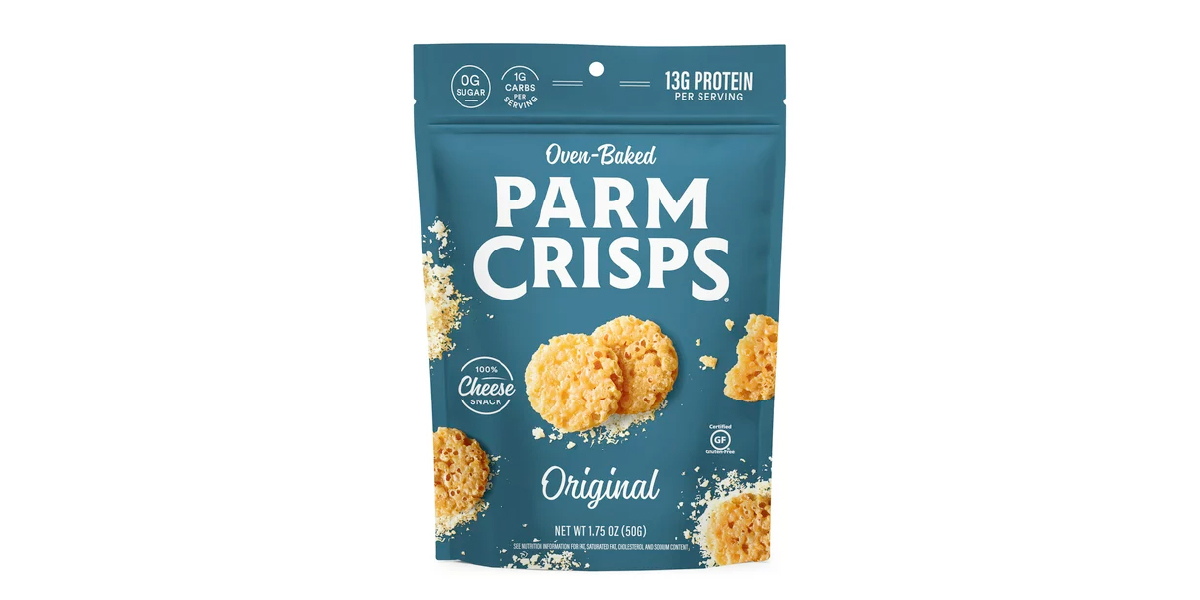
6. ParmCrisps
ParmCrisps Original Flavor is a simple and delicious snack option that is made with just one ingredient: aged parmesan cheese.
Each serving (half a pack) contains
- 160 Calories
- 11 grams of Fat
- 1 grams of Net carbs
- 0 grams of Dietary Fiber
- 13 grams of Protein
Plus, they are a great source of calcium, offering 30% of your daily recommended intake in just one serving. In addition to the multiple flavors available, ParmCrisps are also available as part of a keto-friendly trail mix that includes premium dry roasted nuts and is seasoned with a zesty ranch flavor.
These crispy cheese bites are perfect for snacking on the go or for adding some crunch to your favorite salads and soups. Plus, they are free from any artificial flavors or preservatives, making them a healthy and guilt-free snack option.
Price: $2.98 at Walmart, $34.30 on Amazon
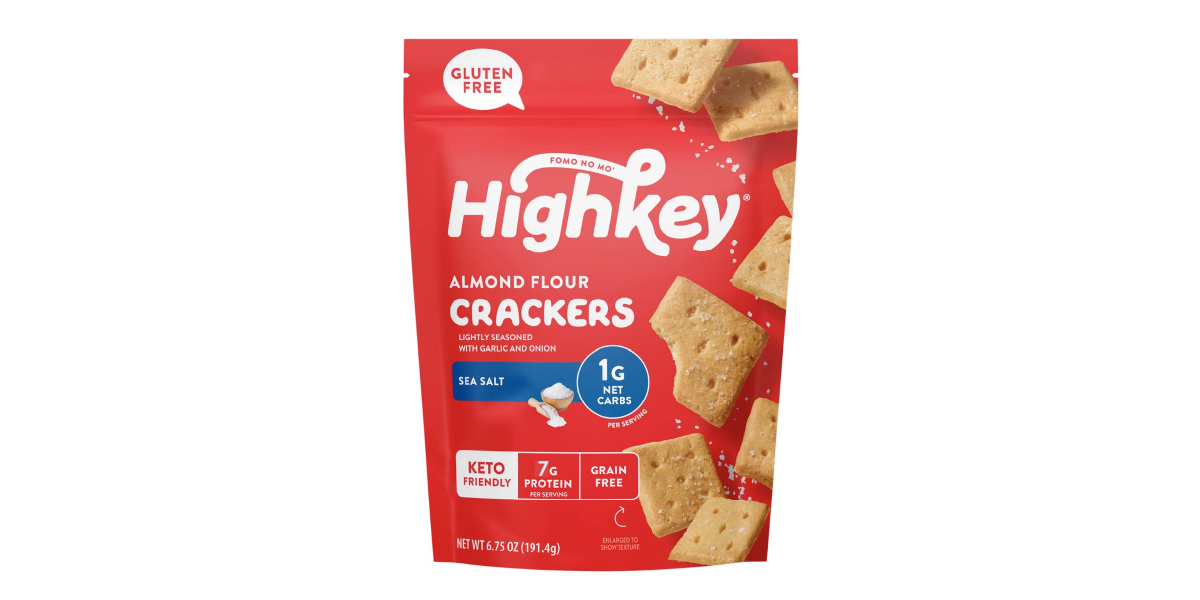
7. High Key Almond Flour Crackers
High Key Almond Flour Crackers are a tasty and healthy snack option for anyone looking for a low-carb, gluten-free, and keto-friendly treat. Made with a blend of almond flour, flaxseed, and egg whites, these crackers are packed with a fair amount of protein and fiber.
One serving of these crackers contains:
- 140 Calories
- 10 grams of Fat
- 2 grams of Net carbs
- 8 grams of Dietary Fiber
- 7 grams of Protein
While they have a relatively long ingredient list, they are free from any artificial flavors or sweeteners, ensuring that they are a healthy and guilt-free snack option.
High Key Almond Flour Crackers come in three delicious flavors: cheddar, sea salt, and everything, making them perfect for snacking on their own or for pairing with your favorite dips and spreads.
One satisfied customer raves about the texture and flavor of High Key Almond Flour Crackers, stating that they are an exception to the often unsatisfying texture of almond flour crackers. She says that although they are not quite as crunchy as regular wheat flour crackers, they come really close.
Price: $13.47 on Amazon, $33.50 at Walmart
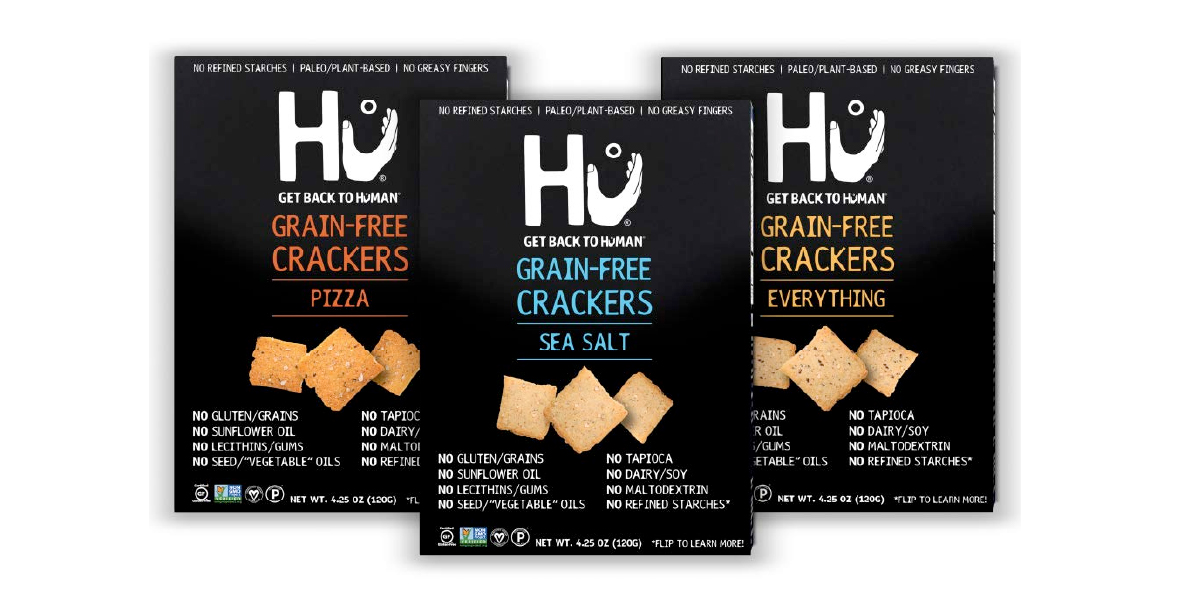
8. Hu Paleo Vegan Crackers
If you follow a very restrictive diet, you’ll love HU Grain-Free Crackers. These crackers come in three flavors: sea salt, everything, and pizza, and are free from gluten, GMOs, and animal products, making them suitable for vegans and those following a paleo diet.
Each serving contains:
- 110 Calories
- 7 grams of Fat
- 9 grams of Net carbs
- 3 grams of Dietary Fiber
- 3 grams of Protein
One downside of these crackers is that they are only available as a package deal of six so it’s a bit of a commitment. You can however, get a variety pack to see which flavor works best for you.
Price: $49 at Hu Kitchen, $26.99 at Walmart
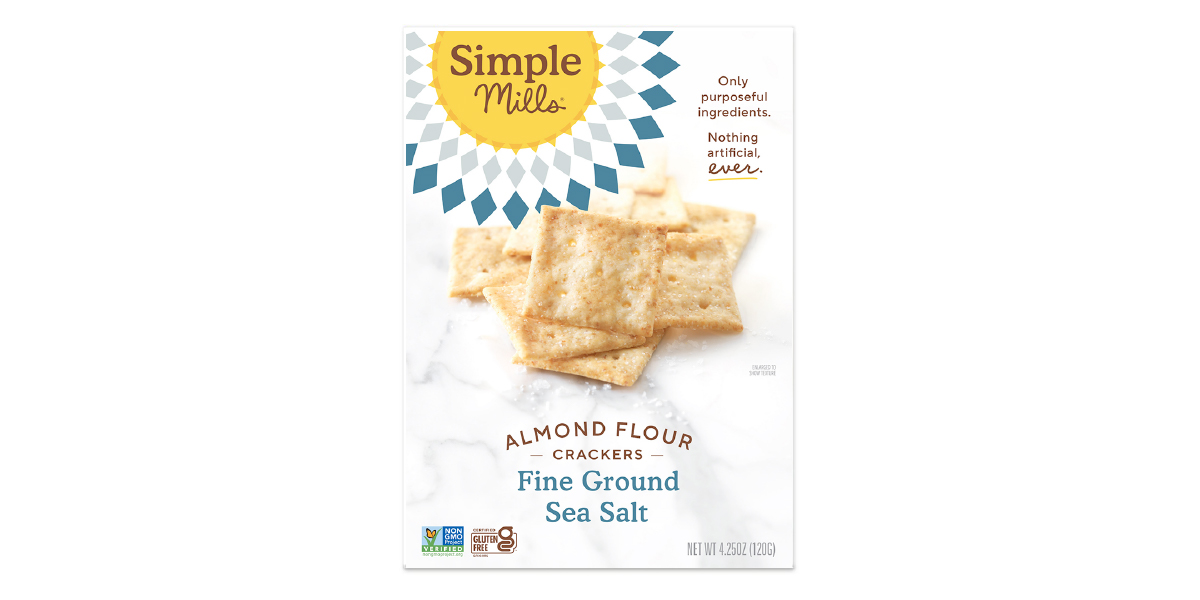
9. SimpleMills Almond Flour Crackers
SimpleMills Crackers are a healthy and delicious snack option for anyone looking for a gluten-free, grain-free, and dairy-free alternative to traditional crackers. Made with a wholesome blend of almond flour, sunflower seeds, and flax seeds, these crackers are certainly a much healthier choice than traditional crackers. Additionally, they are Paleo-friendly and vegan, and are baked, not fried.
Each serving (seventeen crackers) contains:
- 150 Calories
- 8 grams of Fat
- 16 grams of Net carbs
- 2 grams of Dietary Fiber
- 3 grams of Protein
From these macros, you can see that these crackers are quite high in net carbs. However, since the serving size is quite large, you can easily half eat and have only eight to nine crackers. With regard to taste, customers rave about Simple Mills Fine Ground Sea Salt Almond Flour Crackers. One states that she eats grain-free, dairy-free, and sugar-free, and appreciates Simple Mills for making a product that tastes great and is suitable for her dietary needs. With their delicious taste and nutritious ingredients, it’s easy to see why Simple Mills Fine Ground Sea Salt Almond Flour Crackers are a top choice for those seeking a healthy and satisfying snack option.
Price: $5.39 at SimpleMills, $19.47 on Amazon
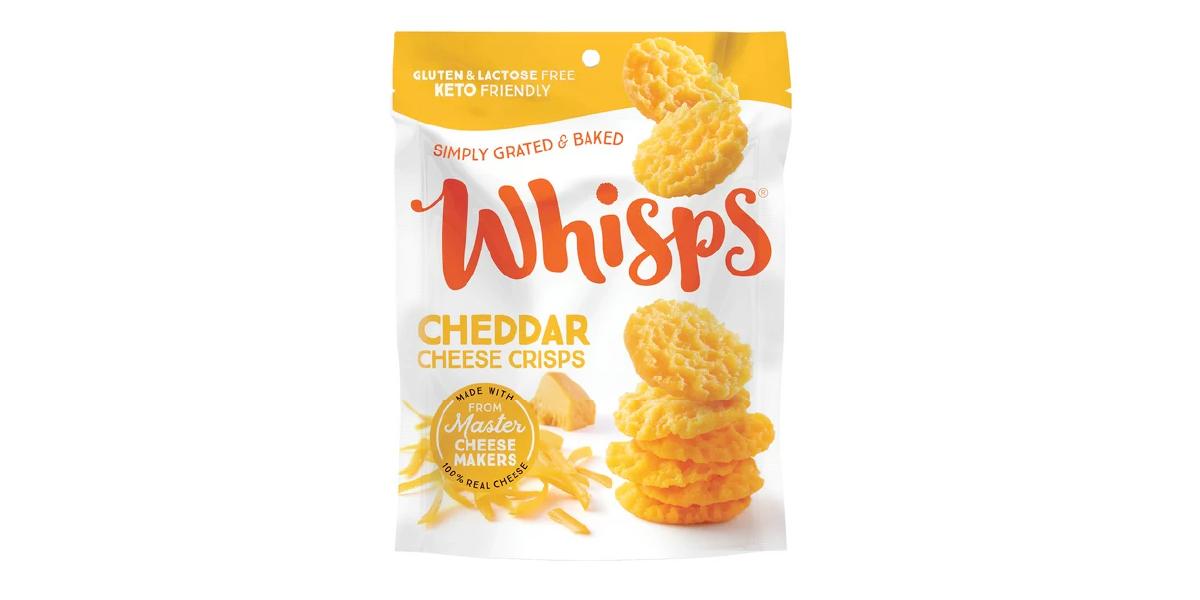
10. Whisps Cheese Crisps
While these aren’t really crackers, Whisps Cheese Crisps make wonderful substitutes for crackers. They are made with 100% cheese and come in eight flavors, including parmesan, cheddar, and pepper jack.
One serving of Whisps Cheese Crisps contains:
- 150-170 Calories
- 10-13 grams of Fat
- 1-3 grams of Net Carbs
- 0 grams of Dietary Fiber
- 9-13 grams of Protein
These crispy cheese bites are gluten-free, with no artificial flavors or colors. Satisfied customers describe Whisps Cheese Crisps as delicious while still fun and convenient. They also say the treats are incredibly versatile as they can be eaten alone or alongside other dishes like soups, spreads, and salads.
Price: $2.98 at Walmart
The Bottom Line
Keto-friendly crackers are a tasty and nutritious snack option that can help you stay on track with your health and dietary goals. By selecting crackers that are low in net carbs, made with natural ingredients, and taste great, you can indulge in a satisfying snack without sacrificing on nutrition or flavor. With so many delicious options available, there’s no reason to compromise on taste or health when it comes to snacking.

